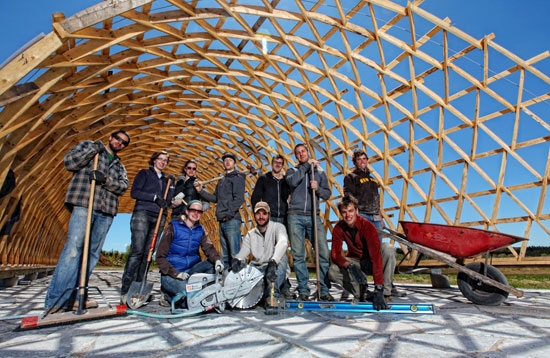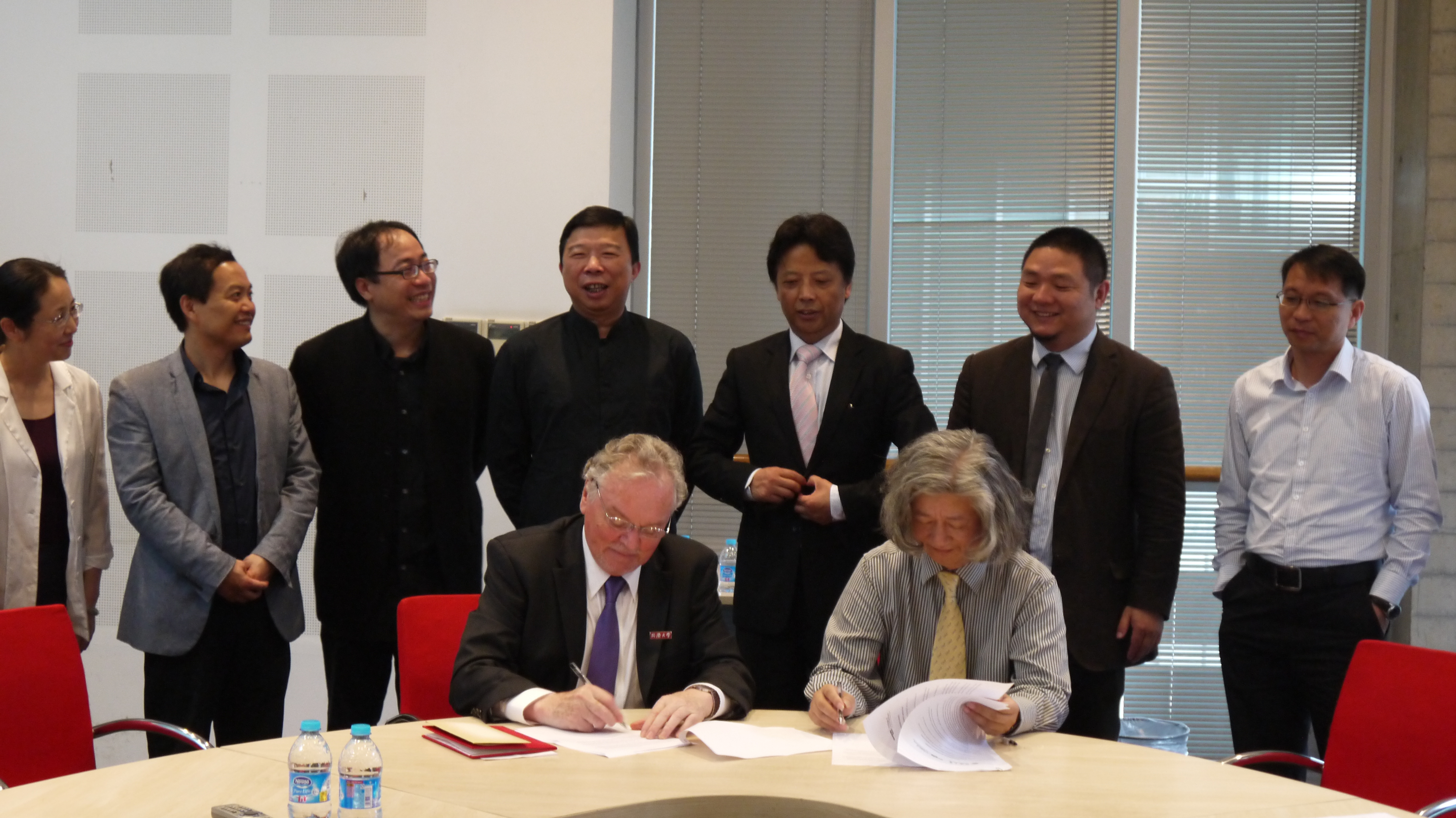Barbara Opar, Column editor
Column submitted by Barret Havens, Asst. Professor and Outreach Librarian, Woodbury University
ArtSource, a relatively new offering from academic database provider Ebscohost, incorporates all of the full-text periodicals previously available via the Art and Architecture Complete and Art Full Text databases along with 70 additional periodical titles. Of the total of 630 full-text journals available via ArtSource, 76 titles were deemed by this reviewer to be directly related to architecture, interior design, landscape design, or urban planning. Most of the titles in addition to those 76 were also deemed worthwhile as they represent a broad range of art and design topics that are essential to a well-rounded architecture collection.
Indexing (non-full-text records) within ArtSource is extensive, and incorporates all of the content from Art Index, Art Index Retrospective, and Art Abstracts. Since the database does include so much content from other digital collections for which institutions may already be paying, adding ArtSource to the mix could be an affordable upgrade, as it was for this reviewer’s institution since they were already subscribing to Art Full Text. Unfortunately, though there is a great deal of overlap, ArtSource subscribers will not have access to all of the records indexed in the Avery Index to Architectural Periodicals.
To those familiar with other databases offered on the Ebscohost platform, there will be few surprises when it comes to searching. Limiters such as document type and publication type, the ability to limit to peer-reviewed publications, and other standard features are available. What is lacking, however, is the ability to limit by the variety of drawing types that are included in the “physical description” limiter of The Avery Index. The image descriptions by which a searcher may limit in ArtSource are somewhat vague: “diagram,” “illustration,” “map,” “chart,” etc.
One useful feature for exploring images within the database is “image quick view.” When this option is toggled, a selection of images contained within each article in the list of results appears below the item. It is easy to access those images without going into the article itself as they can be opened as separate files. Conveniently, each image file comes with its own bibliographic record detailing the source.
This method of accessing images is also provided for the 220 e-books in the collection, which are available in PDF format. What is somewhat confusing about exploring the e-books, however, is the fact that they are broken into article-sized chunks; you will see chapters or small portions of books listed in the search results, making it difficult to make sense of how to access and navigate the entire work. It would probably make more sense to provide access to these e-books by loading the records into your institution’s library catalog.
Publishing embargoes (delay before releasing full text articles) are not excessive compared to other databases, but a considerable number of journals are only available for a short chronological range. Furthermore, though well over half of the architecture-related periodicals available in full-text are in .pdf format, a significant portion are .html and therefore do not include images that may have been in the original publication.
Overall, this database is comprehensive, easy to use, and relatively affordable for institutions that are already subscribing to databases that are incorporated in ArtSource. But, though it may provide your institution’s Avery Index users with more full-text via your link resolver, it cannot be considered a one-stop-shop for architecture researchers since it does not contain all of the content indexed in The Avery Index.
ArtSource periodicals directly related to architecture/planning
| Title | Full-text start | Full-text stop | Full text delay (embargo) | PDF w/ images avail? |
| Architect | 2006 | | | no |
| Architect-designed Houses | 1996 | 1997 | | no |
| Architecton | 2011 | | | yes |
| Architect’s Journal | 2006 | | | no |
| Architectural Design | 2011 | | 12 mo. | yes |
| Architectural Digest | 1995 | | | no |
| Architectural Heritage | 1998 | | 12 mo. | yes |
| Architectural Record | 1998 | | | no |
| Architectural Review | 1993 | | | no |
| Architectural Science Review | 2008 | 2010 | | no |
| Architectural Theory Review | 2008 | | 18 mo. | yes |
| Architecture-Technology-Culture | 2009 | | | yes |
| Architecture and Urban Planning | 2008 | | | yes |
| Architecture Australia | 1996 | | | yes |
| Architecture Boston | 2012 | | | yes |
| Architecture Ireland | 2013 | | | yes |
| Architecture New Zealand | 2009 | | | yes |
| Architecture of Israel | 2008 | | | yes |
| Architecture Plus Design | 2010 | 2011 | | no |
| Architecture_media_politics_society | 2012 | | | yes |
| Architectus | 2011 | | | yes |
| Arkitektur Aktuell | 2004 | | 12 mo. | yes |
| Archivos de Arquitectura Antillana | 2008 | | | yes |
| ArchNet-IJAR | 2008 | | | yes |
| ARQ (Chile) | 2005 | 2011 | | no |
| ARRIS | 2012 | 2012 | | no |
| Assemblage | 1997 | 2000 | | no |
| Buildings & Landscapes | 2007 | | | yes |
| Cadernos d’Obra | 2011 | | | yes |
| Canadian Architect | 2002 | | | yes |
| Center | 2010 | | | no |
| Construction Specifier | 2012 | | | yes |
| Daidalos | 1990 | 2000 | | no |
| DEARQ | 2007 | | | yes |
| Detail | 2007 | | | yes |
| Early Homes | 2010 | | | yes |
| Evolo | 2009 | | | yes |
| Fabrications | 2007 | | 12 mo. | yes |
| FORM: Pioneering Design | 2008 | | | yes |
| Frame (Netherlands) | 2013 | | | yes |
| Future Anterior | 2007 | | | yes |
| Garden Design | 2008 | | | yes |
| GreenSource | 2010 | | | no |
| Grey Room | 2000 | | 12 mo. | yes |
| Home Cultures | 2004 | 2010 | | no |
| Hospitality Design | 1993 | | | yes |
| Inland Architect | 1997 | 2001 | | no |
| Interior Design | 1998 | | | yes |
| Int’l Journal of Islamic Architecture | 2012 | | | yes |
| Interventions/Adaptive Reuse | 2009 | | | yes |
| Issues in Art, Architecture, and Design | 1995 | 1999 | | yes |
| ITU Journal Series A: Arch., Planning, and Design | 2009 | | | yes |
| IUP Journal of Architecture | 2010 | 2012 | | yes |
| Journal of Architectural and Planning Research | 1998 | 2011 | | no |
| Journal of Architectural Education | 1999 | | 12 mo. | yes |
| Journal of Architectural Engineering | 1995 | | 12 mo. | yes |
| Journal of Interior Design | 2004 | | 12 mo. | yes |
| Journal of the American Planning Association | 1990 | | 18 mo. | yes |
| Landscape Architecture Australia | 2009 | | | yes |
| Landscape Design/Build | 2005 | 2007 | | yes |
| Landscape Journal | 1997 | | | yes |
| L’Architettura | 1998 | 2003 | | no |
| Lighting Design & Application | 2011 | | | yes |
| Places: Forum of Design for the Public Realm | 1997 | | | yes |
| Plan: Architecture & Technologies in Detail | 2011 | | | yes |
| Planning | 1993 | | | yes |
| Rassegna di Architettura e Urbanistica | 2012 | | | yes |
| Revista Proyecto, Progreso, Arquitectura | 2012 | | | yes |
| Time-based Architecture Int’l | 2009 | 2009 | | yes |
| Town Planning & Architecture | 2004 | | | yes |
| TPR: Town Planning Review | 2004 | | | yes |
| Vernacular Architecture | 2005 | | 12 mo. | yes |
| Vernacular Architecture Newsletter | 2009 | | | yes |
| Werk, Bauen, und Wohnen | 2001 | | | yes |
| Winterthur Portfolio | 1999 | | | yes |


 Study Architecture
Study Architecture  ProPEL
ProPEL 







 Washington, D.C., July 5, 2013 – Marc J. Neveu, Ph.D., of the Wentworth Institute of Technology has been named Executive Editor of the Journal of Architectural Education (JAE) for a four-year term starting July 1, 2013. Neveu has previously contributed to the JAE as a writer, a reviewer, a theme editor, and, most recently, as an Editorial Board member and Associate Editor of Media Strategies. The JAE has been the primary venue for research and commentary on architectural education since it was founded in 1947. Published twice a year, the JAE is the longest running journal of its kind, with an estimated circulation of over 10,000.
Washington, D.C., July 5, 2013 – Marc J. Neveu, Ph.D., of the Wentworth Institute of Technology has been named Executive Editor of the Journal of Architectural Education (JAE) for a four-year term starting July 1, 2013. Neveu has previously contributed to the JAE as a writer, a reviewer, a theme editor, and, most recently, as an Editorial Board member and Associate Editor of Media Strategies. The JAE has been the primary venue for research and commentary on architectural education since it was founded in 1947. Published twice a year, the JAE is the longest running journal of its kind, with an estimated circulation of over 10,000.





 Dear Colleagues,
Dear Colleagues,
